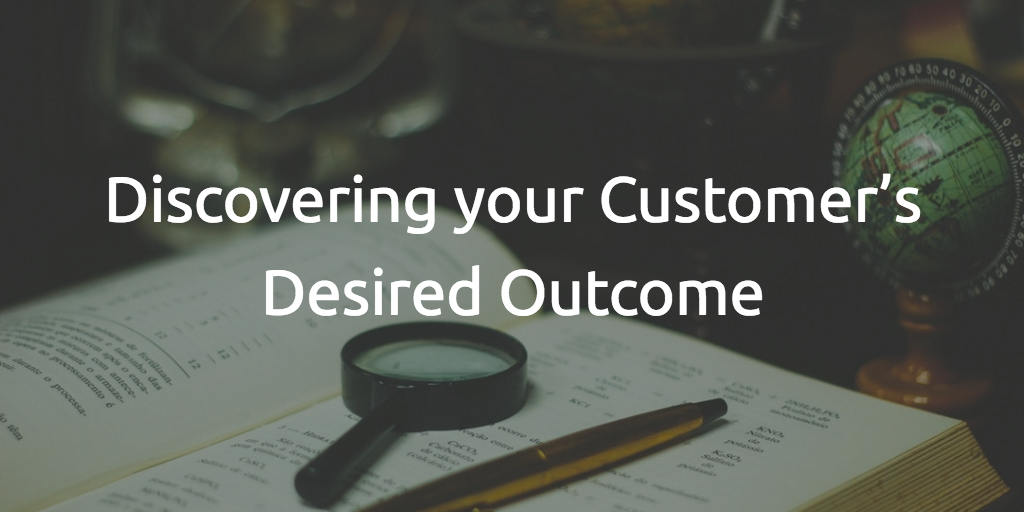 Customer Success is when your customer achieves their Desired Outcome through their interactions with your company.
Customer Success is when your customer achieves their Desired Outcome through their interactions with your company.
Desired Outcome is Required Outcome + Appropriate Experience.
Each customer segment will have its own Appropriate Experience (AX) – even if they share the same Required Outcome – and this will tell you the type and level of coverage (humans – required skills, characteristics, etc. – plus technology).
But below I go into more detail about the process and why it’s critical for you to understand…
For context, on Friday, May 5, 2017, I did a Customer Success Ask Me Anything (AMA) on Facebook live. It was awesome. The video (audio only… sorry) is embedded below and below that is the transcript (edited for better readability) that answers the question.
Discovering your Customer’s Desired Outcome
I don’t know about really easy, but how about from Mariestela, “How do you go about knowing the desired outcome of your client?”
Amazing that it took this long for that question to come up. How do you know what the desired outcome is for the customer? It’s an 11-step process to understanding the customer’s desired outcome. Basically … It’s a great question.
First of all, remember Desired Outcome is made up of two pieces.
One is Required Outcome.
That’s the business goal.
That’s what they have to achieve.
The other is their Appropriate Experience (AX).
The first one is relatively easy to understand. It’s probably why we built the product. It’s something that is easy to grasp.
It’s the Appropriate Experience – AX – part that most people have problems with, not simply when they start doing this process, but often in simply wrapping their brains around the concept in the first place.
What AX requires you to do is to really get to know the customer.
When I say that, what I mean is there’s not going to be one question that you ask a customer and you will magically know what their Appropriate Experience is.
You’re going to have to talk to them.
Ask them questions.
Don’t ask them what their Appropriate Experience is, but start talking to them about what they would expect in order to be successful.
You’re going to have to take those questions and really make them your own for your situation, but it’s more than that, too.
Start looking at adjacent products that are similar to yours in price, similar to yours in who buys and uses it inside of a company, but are not competitive necessarily.
You could look at competitive products as well, I guess, but what we want to do is get an idea of what our customers would expect from a vendor similar to us. That’s going to give us some baseline.
We can ask questions of our customers, “Are they happy with those vendors or not?”
And then shut up and listen to their answer. Let them talk and listen for things – good and bad – that aren’t about the product but are about the overall experience.
That will start a conversation, which is what you want.
“This company that is similar to ours has a low touch experience, and our prospect or our customer is saying that that’s not appropriate.” Okay, cool.
We can start to ascertain some things from that. It’s observing.
Go spend some time with your customer actually onsite.
When was the last time you shadowed – not just visited for a meeting – a customer? You actually saw them using your product or saw them doing their job.
There’s a whole bunch of things that you can do.
It’s a discovery process.
It’s not a dictation process.
In other words, you’re not telling your customers what their Desired Outcome is. It’s a discovery process. It takes some time.
Let me put it a different way.
It just takes some energy.
You can do this relatively quickly.
You probably also know a lot more about what your customer’s Desired Outcome is than you even think.
Sit down, take a step back, think about it.
I bet you’ll come up with some answers that you hadn’t even really considered.
There’s a process to this, but hopefully that gives you some ideas.



